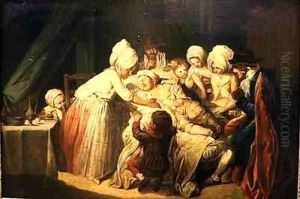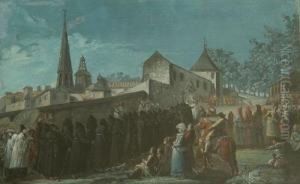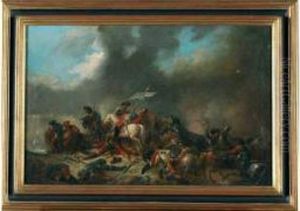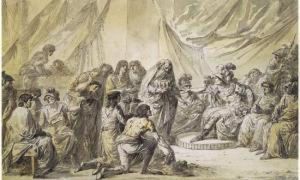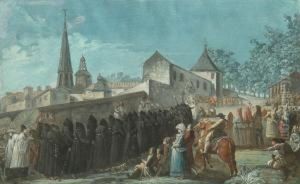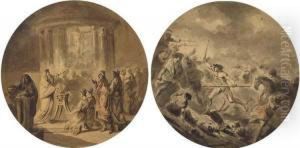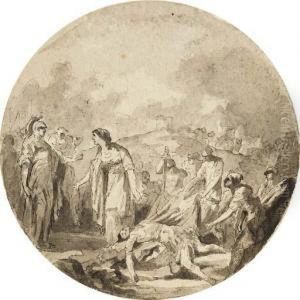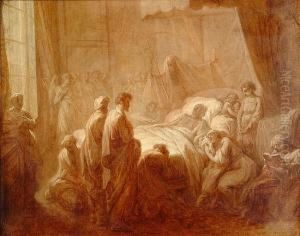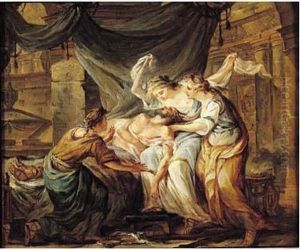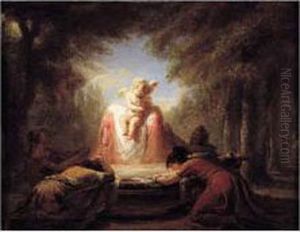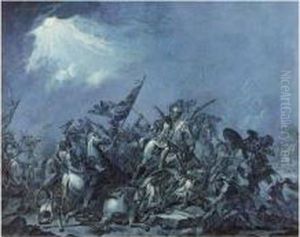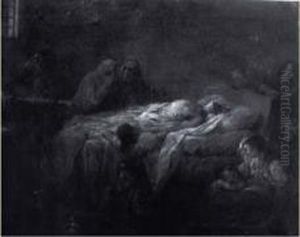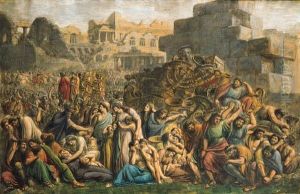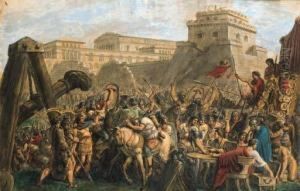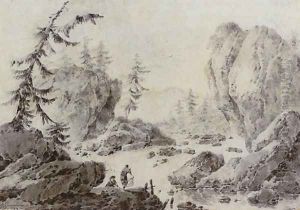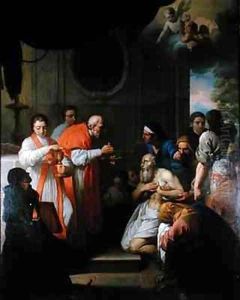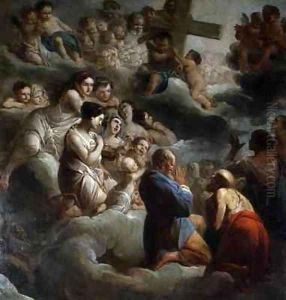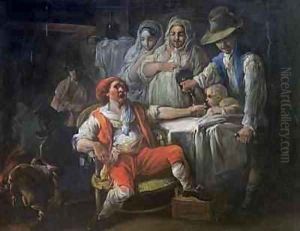Jacques Gamelin Paintings
Jacques Gamelin was a French painter and engraver born on October 6, 1738, in Carcassonne, France. He was primarily known for his work in the Neoclassical style, which was popular in the late 18th century. Gamelin demonstrated a talent for art at an early age and was sent to study in Toulouse under the guidance of renowned artist Jean-Pierre Rivalz. After his initial training, he moved to Rome to further his studies, absorbing the works of the old masters and honing his skills in the classical tradition.
During his time in Rome, Gamelin won the prestigious Prix de Rome in 1765, which allowed him to remain in Italy for an extended period and study at the French Academy. His style was heavily influenced by the antique and the works of Renaissance masters, which can be seen in his mythological and historical paintings. In 1774, he returned to France and settled in his hometown of Carcassonne where he became known for his portraits and historical scenes, often using dramatic lighting and strong colors that demonstrated his mastery of the Neoclassical idiom.
Apart from his paintings, Gamelin is also remembered for his series of engravings titled 'Nouveau recueil d'ostéologie et de myologie' (New Collection of Osteology and Myology) published in 1779, which was intended for artists and students of anatomy. This work showcased his deep understanding of the human form and his ability to translate it into artistic representations.
Despite his artistic talents, Gamelin's career was not without struggles. His work was at times criticized for a perceived lack of refinement and excessive use of dramatic effect. Financial difficulties also plagued him, and while he received commissions from notable patrons, it was not enough to ensure a stable income.
Jacques Gamelin's contribution to the arts was recognized in his lifetime, but his fame waned after his death on October 10, 1803. However, his works continue to be studied by art historians and are held in various collections, offering insights into the Neoclassical movement and the art scene of his time.
